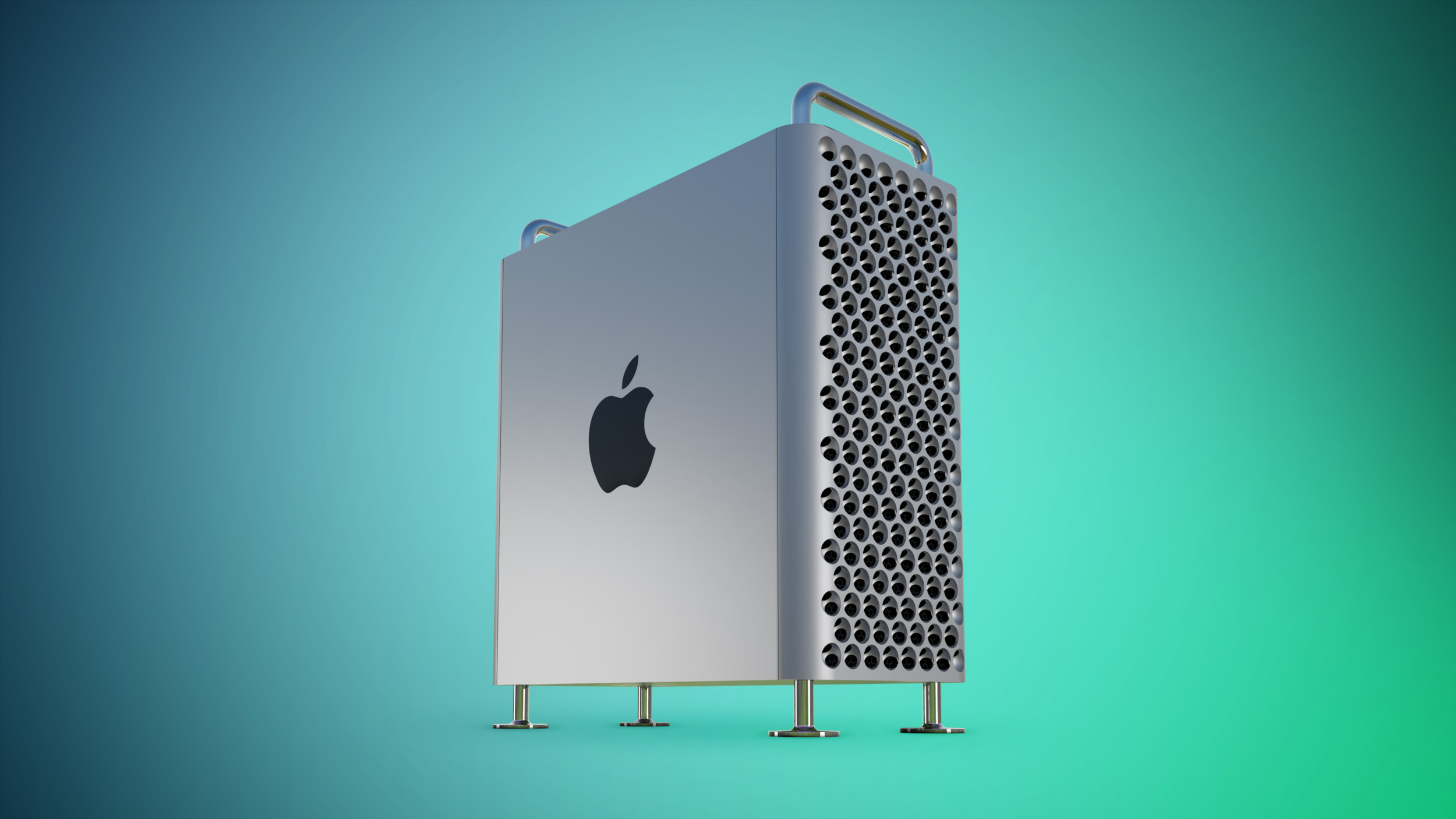![]()
Across 2024 and the early months of 2025, Apple refreshed all of its Macs with next-generation M4 chips, with the exception of the Mac Pro. The Mac Pro is still waiting for an update, but it is supposed to get an overhaul later this year.
M-Series Chip
The current version of the Mac Pro can be purchased with Apple's M2 Ultra chip, which came out in June 2023. It might seem logical for the Mac Pro to get the equivalent M4 chip, the M4 Ultra, but it turns out Apple might not have an M4 Ultra in the works.
When the Mac Studio was updated earlier this month, Apple announced a version with the M4 Max chip, and a version with an M3 Ultra chip, with no M4 Ultra unveiled. Apple
told Mac Studio reviewers that not every generation of M-series chips will include a higher-end "Ultra" tier, so there may simply be no M4 Ultra that exists for the Mac Pro.
There's now a question over what chip Apple will use in the Mac Pro, and there are a few possibilities.
- Apple does have an M4 Ultra chip coming, and it's not ready yet.
- There's some version of a high-end M4 chip that is not technically an "Ultra" chip and is instead called something else like "M4 Extreme."
- The Mac Pro will use the M3 Ultra chip.
- The Mac Pro will get an M5 Ultra chip.
The M1 Ultra, M2 Ultra, and M3 Ultra chips that Apple has released have essentially been two Max chips linked together through an "UltraFusion" connector. The M4 Max
does not have the UltraFusion connector available, so the first possibility seems unlikely.
Apple could be making an M4 Ultra or Extreme chip that is standalone and not a doubled up variant of the M4 Max, but
Bloomberg's Mark Gurman
recently claimed that Apple doesn't want to create an M4 Ultra chip from scratch because of costs, production challenges, and low sales of high-end and expensive machines.
Apple could refresh the Mac Pro with the same M3 Ultra chip that it put in the Mac Studio, but if that's Apple's plan, it's likely the company would have just refreshed the Mac Pro alongside the Mac Studio. The Mac Pro could be held back for other development reasons, but there aren't really rumors of notable new features coming.
We might be getting the first Macs with M5 chips later this year, but there's also a chance M5 Macs won't come until early 2026. Even if Macs with M5 chips do launch in late 2025, there's no guarantee that an Ultra version of the chip will be ready to go.
As of right now, there's no clear indication of what's in store for the 2025 Mac Pro's Apple silicon chip.
Design
There aren't rumors of design updates for the next Mac Pro, so it's not likely that Apple has anything planned.
Ports
Apple added Thunderbolt 5 to the Mac Studio and MacBook Pro, so the Mac Pro will likely get Thunderbolt 5 ports too. Thunderbolt 5 will allow for more high-resolution displays to be connected to the Mac Pro.
RAM and SSD
The M3 Ultra chip supports up to 512GB RAM, so if the Mac Pro gets the M3 Ultra or something similar, it will support a lot more RAM. The current model is limited to 192GB.
Storage maximums will also double, as the M3 Ultra supports up to a 16TB SSD, while the Mac Pro is limited to 8TB.
Launch Date
Bloomberg's Mark Gurman said last year that the Mac Pro will see a refresh
toward the end of 2025, but given the chip uncertainty, Apple could be planning to hold it until 2026.
Article Link:
Apple's Last M4 Mac: What's Rumored for the Mac Pro





